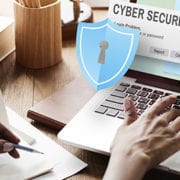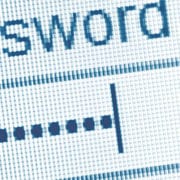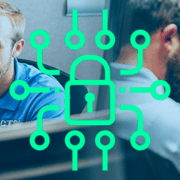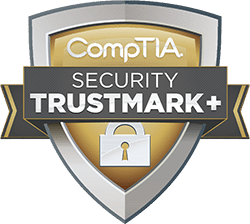Making Sure You’re up to Date on Cybersecurity
How important is cybersecurity for your business? If you’re asking this question, you’re not alone. In fact, statistics show that 1 in 5 SMBs don’t have any cybersecurity protection at all.
Here’s the reality: over 63% of SMBs have actually experienced a cyberattack, and this number is only expected to grow.
So what does this mean for you? It’s simple. You need an effective cybersecurity strategy.
Here’s how to make one.
What to Include in Your Cybersecurity Strategy
Every business has a unique set of demands and challenges. That said, every successful cybersecurity strategy should include, at a minimum, these five things:
Mission objectives
Set out your company’s cybersecurity goals and objectives. Be clear on what challenges your company faces and how you plan on handling them.
Hardware and software audit
You can’t protect your infrastructure if you don’t know what’s there. List all your current hardware and software, including:
- Communications (e.g., telephones)
- Portable devices
- Network infrastructure
- Storage facilities, including cloud computing
Update this list when required.
Risk assessment
Your risks vary depending on:
- The complexity of your IT architecture
- Your sector and industry
- The volume of data you handle and how confidential it is
So, you need to rank your cybersecurity risks and allocate your security budget accordingly. Identify the greatest threats based on:
- How likely they are to manifest
- The financial consequences
Remember, the risk matrix will vary from business to business. It’s all about what works for your company.
Progress monitoring
Your company’s cybersecurity needs will change frequently. With that in mind, you need to review your security policies at regular intervals to ensure they’re fit for purpose.
Training
Even the best security strategy is meaningless if no one knows how to implement it. Set aside a clear budget for cybersecurity training and arrange for support from a managed services provider, if you need it.
Why Educating Your Employees on Cybersecurity Is Vital
Employees are key to your company’s success. They’re also a crucial line of defense against cyberattacks. Here are the two main reasons why you can’t afford to ignore employee cybersecurity training.
- Your employees can’t detect security threats unless they know how to identify them.
- Around 90% of data breaches result from human error.
To mitigate your risks, ensure employees know:
- How to choose safe passwords, and when to update them
- Who to contact if they have security concerns
- What potential threats to look out for
How and When to Update Your Security Framework
So you have a cybersecurity plan. What happens next? When should you update it, and what should you change?
Ideally, you should perform a cybersecurity risk assessment whenever you:
- Roll out new hardware
- Introduce new IT strategies, like cloud computing or unified communications
- Suffer a data breach or cyberattack
Once you’ve risk-assessed your cybersecurity, here’s how you can update your framework:
- Identify your IT budget and business objectives.
- Take whatever steps you need to bring your security in line with these company objectives.
- Set a date for reviewing your framework again.
- Partner with a managed services provider for extra support, if you don’t already have one.
Takeaway
Don’t assume your company is too small for hackers to target. Every business needs robust cybersecurity protection.
For more help deploying reliable cybersecurity across your business, contact us today.
















